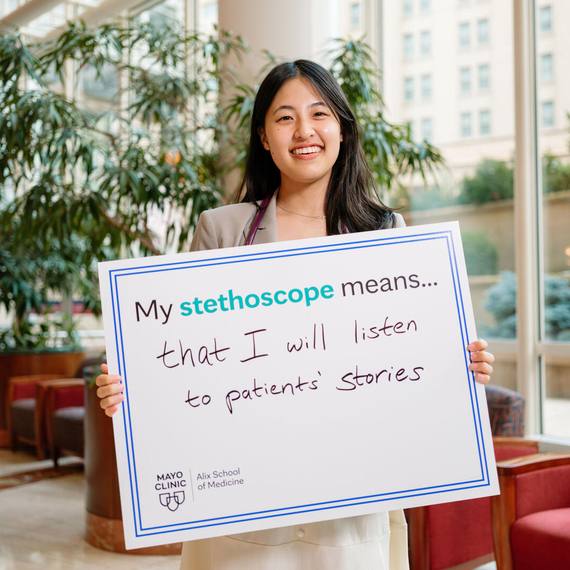-
Research vs. Primary Care medical school ratings

What's the difference between the U.S. News and World Report rating for Medical Schools: Research and Medical Schools: Primary Care?
As an academic medical center, Mayo Clinic is home to the Mayo Clinic College of Medicine and Science and its five schools, including a nationally-rated research medical school, Mayo Clinic Alix School of Medicine. Also within the College is Mayo Clinic School of Graduate Medical Education, the largest sponsoring program in the United States, with 204 ACGME accredited programs and a total of 370 training programs.
Approximately, 30% of Mayo Clinic Alix School of Medicine graduates match into a primary care residency with the remaining entering specialty residency programs. According to the American Medical Association (AMA), research experience can make students more competitive for residency program and demonstrates a commitment to advancing medical knowledge. In fact, recent National Resident Matching Program (NRMP) match reports show that the average number of publications, presentations and abstracts reaches 25 to over 30 for applicants in specialties like neurosurgery or plastic surgery. In 2024, the average number of research items for successful neurosurgery residency applicants was 37.4, whereas the average number of research items for successful family medicine applicants was 4.2. However, all areas of practice are seeing an increase in research publications.
Mayo Clinic Alix School of Medicine integrates research training into its medical education through several key methods:
- Core curriculum: Research is a fundamental part of the curriculum, ensuring all students gain exposure to research methodologies and practices. This includes coursework in basic science, translational research and clinical research.
- Mentorship model: Students are paired with experienced investigators who guide them through research projects. This mentorship helps students learn the ropes and engage deeply in their chosen research areas.
- Research opportunities: Mayo Clinic offers extensive research opportunities across various fields. Students can participate in projects ranging from basic science to clinical studies, often leading to publications in peer-reviewed journals.
- Academic enrichments: Nearly 200 academic enrichment opportunities are available, allowing students to customize their education to meet individual goals. These include advanced degrees, clinical electives, global health experiences and selectives.
- Workshops and seminars: Mayo Clinic hosts workshops and seminars to enhance research skills. These events cover topics such as education theory, curriculum development, small-group teaching and feedback.
- Capstone projects: Students participate in capstone projects, which involve facilitating educational workshops and presenting research findings at conferences.
These methods ensure that Mayo Clinic Alix School of Medicine students are well-prepared to contribute to medical science and advance their careers through research. With more than 800 full-time faculty members and more than 270 scientific faculty actively involved in research, Mayo is rich in opportunities.
"We believe it's essential that medical students, residents and fellows actively participate in some type of research," says Fredric Meyer, M.D., Waugh Executive Dean of Education, Mayo Clinic. "Research advances one's own knowledge base. It enhances care. It leads to discovery of new and better ways to treat patients."
Mayo Clinic Alix School of Medicine is rated in the Research category due to its strong research integration. For USNWR, the average weight of the research rating factors is 60% of the overall score used to place each school in its tier.
For students interested in primary care, Mayo Clinic Alix School of Medicine also offers one of the strongest medical training programs in the world with a robust curriculum, national and global clinical training opportunities, and early hands-on experience for students. For USNWR, the average weight of the primary care rating is that at least 60% of the medical graduates initially go into primary care fields such as primary care with a specialty in family medicine, internal medicine, pediatrics, geriatrics, general practice or internal medicine pediatrics.
National ratings are just one of many measures of quality and value for prospective students. Mayo Clinic Alix School of Medicine offers quality and value data on Quick Facts so prospective students can evaluate what distinguishes it from other leading medical schools.







